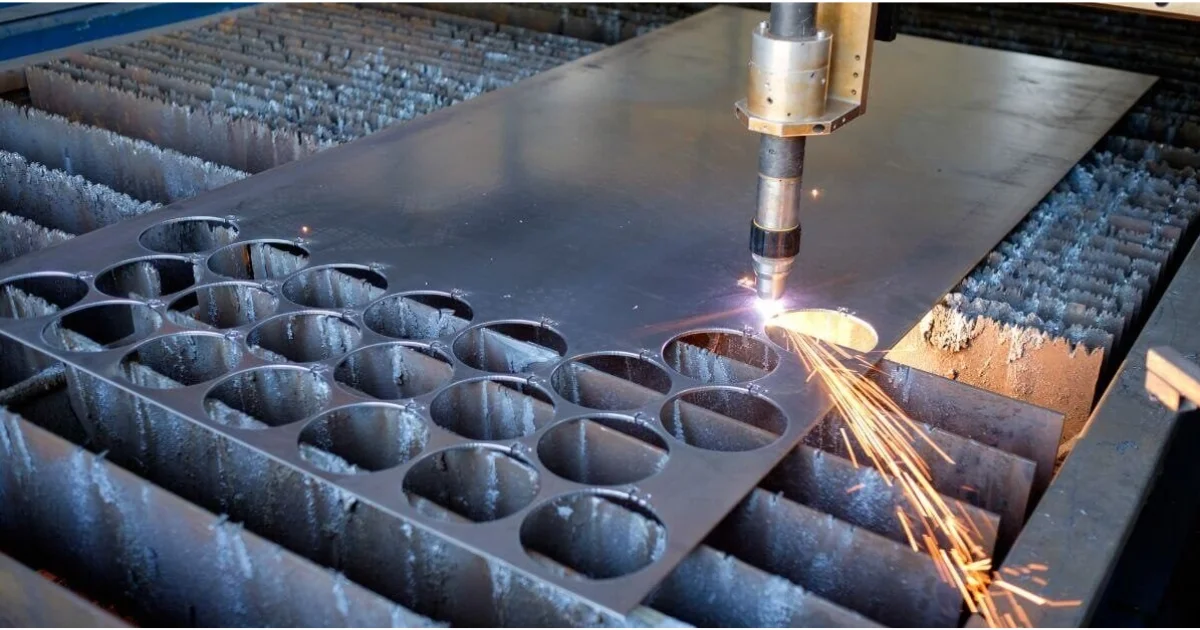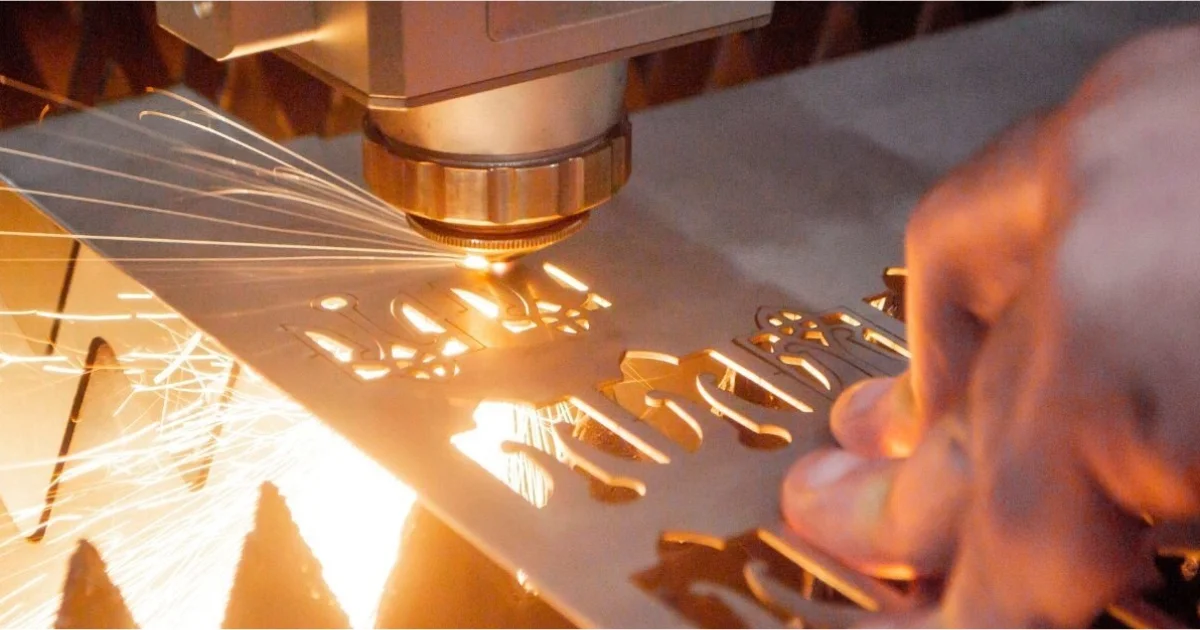
We collect basic website visitor information on this website and store it in cookies. We also utilize Google Analytics to track page view information to assist us in improving our website.
If you’re passionate about metal cutting or just keen to learn more, you’ve landed in the right place.
For over 38 years, Amber Steel has been at the forefront of metal cutting services, specializing in laser cutting, flame cutting, and plasma cutting. Our expertise has carved a niche in this cutting-edge industry, delivering precision and excellence across industrial projects big and small.
In our blog, we’ll share a mix of useful tips, innovative applications, our thoughts on sustainability in steel cutting, and more. Expect stories from the cutting floor, insights into how our processes can streamline projects across industries, and a few lessons we’ve learned along the way.
While we keep some of our trade secrets under wraps, this blog is designed to offer valuable nuggets of wisdom that you simply won't find anywhere else. Whether you’re a professional in the industry or someone fascinated by the possibilities of metal cutting, you'll find something of value here.
So, stick with us as we delve into the finer points of metal work. We’re glad to share our insights and lead discussions that matter to our industry.
How precision metal cutting propels the aerospace industry, from constructing lighter frames to enhancing aerodynamics.
The role of advanced metal cutting in automotive manufacturing, driving innovations in vehicle design and efficiency.
All about the robust and versatile process of flame cutting, ideal for tackling thicker metals with precision and ease.
Discover the art of crafting metal furniture, where cutting techniques meet design to create both functional and aesthetic pieces.
A behind-the-scenes look at the mechanics of metal cutting technologies and the science that makes them tick.
Laser cutting is where extreme precision meets efficiency, allowing for intricate designs and clean finishes.
The critical role of precise steel cutting in developing reliable and intricate medical devices.
How steel cutting supports the oil and gas industry with components that withstand extreme environments and pressures.
Known for its speed and versatility, plasma cutting slices through conductive metals with hot plasma.
Safety first! Tips and insights on maintaining a safe environment while handling powerful metal cutting equipment.
The backbone of construction, where steel fabrication and cutting technologies create frameworks that shape skylines.
Sustainability
A look at sustainability in metal cutting, focusing on practices that reduce waste and conserve energy to protect our planet.

The shiny, speckled surface of galvanized steel hides a challenge that catches many fabricators by surprise. While zinc coating creates metal that stands up to years of harsh conditions, it also causes problems when cutting time arrives. Choose the wrong method, and you'll face equipment issues, poor edge quality, and possible safety hazards – but with the right approach, these challenges become opportunities.
The decision between plasma and laser cutting determines how competitive your entire operation becomes.
This post breaks down the real differences between plasma and laser cutting for galvanized steel. We'll explore when each method makes sense, how to avoid common pitfalls, and ways to get better results regardless of which technology you use.
Walk into any construction site or manufacturing plant, and you'll spot galvanized steel. The distinctive spangle pattern comes from zinc coating applied through hot-dipping (dunking steel into molten zinc) or electro galvanizing (bonding zinc through an electrical process). This coating typically measures between 5-100 microns thick – thinner than a human hair but tough enough to protect steel for decades.
Manufacturers choose galvanized steel for building frames, auto bodies, HVAC systems, appliances, and farm equipment when they need durability without the cost of stainless.
But that zinc layer complicates cutting in four key ways:
Zinc turns to vapour at 907°C while steel needs 1,370°C to melt – creating potentially hazardous fumes. The Occupational Safety and Health Administration (OSHA) sets exposure limits at 5 mg/m³ over an 8-hour work shift and 10 mg/m³ for short-term (15-minute) exposure.
The vapour often interferes with cutting processes, affecting quality and scattering laser beams
Zinc residue builds up quickly on equipment, increasing maintenance needs
Cut edges lose their protective coating, sometimes requiring additional treatment
Because of these risks, proper fume extraction and air quality monitoring are essential. Shops should position high-quality extraction hoods near cutting areas to capture zinc fumes before they spread. Filters designed specifically for metal fumes – not standard dust collectors – should be used to maintain clean air. Regular air quality checks help ensure compliance with OSHA limits and protect worker safety.
Plasma cutting works by sending an electrical arc through gas (typically air, nitrogen, or oxygen) to create superheated plasma that melts through metal. This technology hits the sweet spot of versatility, cost, and performance for many galvanized applications.

Key benefits for galvanized steel:
Less fussy about the zinc layer: The process simply blasts through the coating with minimal interference issues.
Handles thick materials with ease: Plasma cutting systems can process galvanized steel from 1 mm up to 50 mm thick.
Keeps equipment costs reasonable: Plasma offers a lower-cost alternative for cutting thicker galvanized steel.
Optimized for zinc-coated materials: Using the right consumables and gas mixtures minimizes zinc splatter and ensures smooth cut quality
Limitations:
Wider kerf than laser cutting: Plasma typically removes more material, with cut widths ranging from 1.5 mm to 5 mm, though high-definition plasma (HDP) systems can reduce kerf width to around 1 mm.
Post-processing may be required: Some dross (hardened metal slag) may form on cut edges, requiring minimal grinding or cleanup.
Higher heat-affected zone (HAZ): While high-definition plasma systems reduce heat spread, laser cutting remains better for applications requiring minimal distortion.
Laser cutting uses focused light energy to heat metal beyond its melting point, while pressurized gas blows the molten material away. Modern fiber lasers have largely replaced older CO₂ systems for metal cutting, bringing better speed and efficiency.
Key benefits for galvanized steel:
Exceptional accuracy: 6,000 W and 10,000 W fiber lasers achieve positioning accuracy within ±0.05 mm, with kerf widths generally between 0.08 mm and 1 mm.
Superior edge quality: Cuts produce clean, square edges that often need no additional finishing
Handles complex designs: Laser technology manages detailed patterns that plasma systems simply can't achieve
Flies through thin material: Lasers cut galvanized steel up to 25.4 mm thick, with peak efficiency on sheet metal under 6 mm
Limitations:
Vapour interference: Zinc vapourizes during cutting, creating plasma that can scatter the laser beam
Maintenance headaches: That vapourized zinc often coats optical components, requiring frequent cleaning
Reflection problems: Shiny zinc surfaces can reflect the beam in unpredictable ways with some laser configurations
Edge protection issues: The heat can damage the zinc coating at cut edges, requiring touch-up
Let's compare how each method performs in real production environments:
Plasma: Rougher edges with occasional dross attachment. Most parts need some finishing work, especially on thinner materials.
Laser: Smoother, cleaner cuts on galvanized steel. Parts often go straight to the next production stage without extra finishing.
Plasma: Works for general fabrication but struggles with intricate details or tight-fitting assemblies.
Laser: Handles precise cuts for detailed parts and components that must fit together with minimal gaps.
Plasma: Truly shines on thick galvanized steel (>6 mm). It cuts through heavy materials where laser falters.
Laser: Excels on sheet metal but struggles as thickness increases.
Performance drops significantly on heavier gauges.
The economic landscape for cutting technology has evolved significantly in recent years. While plasma systems have traditionally offered lower entry costs, fiber laser technology has become increasingly accessible to mid-sized operations. Entry-level fiber laser systems now represent a viable option for many shops that previously could only consider plasma.
When evaluating costs, consider both initial investment and long-term factors like maintenance, consumables, and productivity gains. Plasma generally requires more frequent consumable replacements, while laser systems often deliver higher production rates on thin materials – potentially offsetting higher upfront costs for shops primarily cutting sheet metal.
Plasma: Competitive on thicker materials (>6 mm). As thickness increases, plasma's speed becomes superior.
Laser: Significantly faster on thin sheet metal. Speed advantage is substantial on sheet stock under 6 mm.
Plasma: Heat affects a wider zone around the cut, sometimes causing more warping on thin parts.
Laser: Concentrates heat in a smaller area, reducing distortion and maintaining part geometry better.
By understanding these differences, manufacturers can make informed decisions on which cutting method best suits their production needs and material specifications.
No matter which cutting method you choose, these straightforward tips will help you get better results with galvanized steel:
For plasma cutting: Position the torch slightly farther from the material than you normally would for regular steel. This extra space helps manage the zinc vapour.
For laser cutting: Use less power than you would for regular steel but increase your assist gas pressure. This combination handles the zinc layer better.
Slow down your cutting speed. While this takes a bit longer, you'll get cleaner cuts and spend less time fixing problems afterward.
Try using nitrogen as your assist gas. It often helps preserve the protective zinc coating closer to the cut edge.
Keep zinc spray on hand to touch up cut edges. Since cutting removes the protective coating at the edge, this helps prevent rust.
Before painting or adding any coatings, lightly grind the cut edges. This removes zinc residue and helps new coatings stick better.
For important parts, test the cut edges to make sure they'll resist corrosion. Simple salt spray tests can identify potential problems.
Check how much zinc coating remains near your cuts. Areas close to cuts often need additional protection.
When deciding between plasma and laser cutting for galvanized steel, consider these factors:
Choose plasma cutting when:
You primarily work with material thicker than 6 mm
Initial equipment investment and operating costs are major concerns
You need durability in tough environments where dust and vibration are common
Preserving the protective zinc coating near cuts matters most
Choose laser cutting when:
Precision tolerances tighter than ±0.05 mm are required
Your products include intricate details or complex shapes
You primarily work with thin galvanized sheet (0.5-6 mm)
Production speed with thin materials drives your business
Don't overlook alternative methods entirely. Waterjet cutting eliminates heat-affected zone concerns but operates significantly slower than thermal methods. For straight cuts on sheet material up to 12 mm thick, mechanical shearing offers simplicity and efficiency without any thermal issues.
Many fabrication shops find having access to both technologies provide the most flexibility, using each method where it performs best.
Success with galvanized steel depends on how you optimize your operations. These best practices will help you maximize results:
Document optimal settings for each material thickness and type
Maintain equipment proactively – clean optical components on lasers and replace plasma consumables before they deteriorate
Use design software that accounts for material behaviour during thermal cutting
Stay informed about new developments in cutting technology that may benefit your specific applications
At Amber Steel, we combine advanced cutting technology with decades of practical experience to deliver exceptional results on galvanized steel projects. Our team understands the unique properties of zinc-coated materials and maintains both plasma and laser systems optimized specifically for these applications.
Contact us today to discuss your galvanized steel cutting needs and discover how our specialized services can help you achieve better quality, faster turnaround, and more competitive pricing.